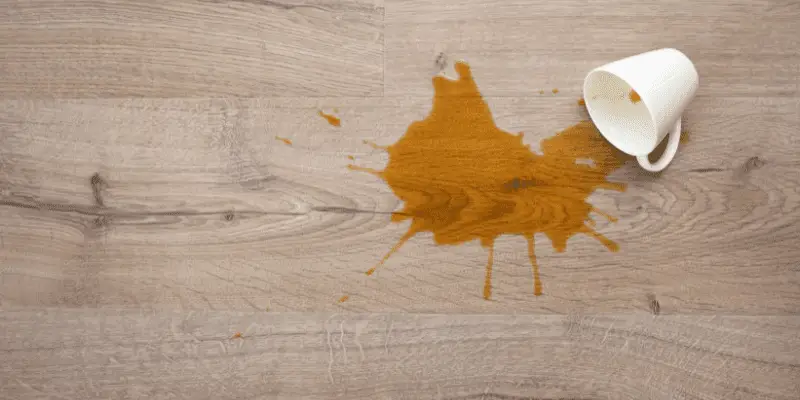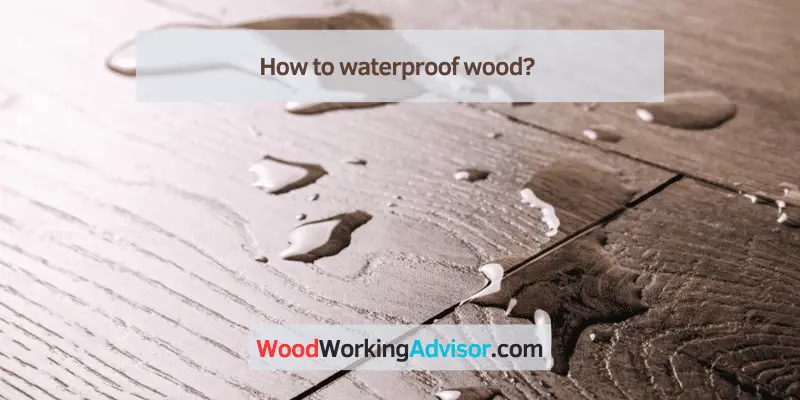The choice of the best waterproof wood largely depends on the specific application and environmental factors. Some wood species are naturally more water-resistant than others, such as cedar, redwood, and teak, which contain natural oils that repel water. Pressure-treated wood, particularly treated with water-repellent chemicals, is another option for outdoor use. Additionally, engineered woods like marine-grade plywood or composite materials can provide excellent waterproof properties.
The process involves surface preparation, choosing the right waterproofing product, application, and maintenance. Start by cleaning and sanding the wood, then select an appropriate sealer, stain, or finish. Apply the chosen product evenly, allowing it to dry thoroughly between coats.
To enhance the wood’s water resistance, it’s essential to apply a suitable sealant or waterproof coating. Ultimately, the best choice depends on the project’s location, purpose, and budget, as well as the level of maintenance and aesthetics desired.
Best Waterproof Wood:
The choice of the best waterproof wood largely depends on the specific application and environmental factors. Some wood species are naturally more water-resistant than others, such as cedar, redwood, and teak, which contain natural oils that repel water. Pressure-treated wood, particularly treated with water-repellent chemicals, is another option for outdoor use.
Additionally, engineered woods like marine-grade plywood or composite materials can provide excellent waterproof properties. To enhance the wood’s water resistance, it’s essential to apply a suitable sealant or waterproof coating.
Ultimately, the best choice depends on the project’s location, purpose, and budget, as well as the level of maintenance and aesthetics desired.
Waterproof Wood Flooring:
Waterproof wood paint, often referred to as exterior or weatherproof paint, is a specially formulated paint designed to protect wood surfaces from moisture, UV rays, and the elements.
It contains additives that make it highly resistant to water penetration and provide a durable finish that withstands rain, humidity, and other outdoor conditions. This type of paint is ideal for exterior wooden structures, such as fences, decks, siding, and outdoor furniture, to prevent moisture damage, rot, and decay.
Waterproof wood paint not only offers protection but also enhances the aesthetics of wood by providing a long-lasting, attractive finish that can withstand the challenges of outdoor exposure. It’s available in various colors and finishes to suit your design preferences and practical needs.
Waterproof Wood Paint:
Waterproof wood paint, often referred to as exterior or weatherproof paint, is a specially formulated paint designed to protect wood surfaces from moisture, UV rays, and the elements. It contains additives that make it highly resistant to water penetration and provide a durable finish that withstands rain, humidity, and other outdoor conditions. This type of paint is ideal for exterior wooden structures, such as fences, decks, siding, and outdoor furniture, to prevent moisture damage, rot, and decay. Waterproof wood paint not only offers protection but also enhances the aesthetics of wood by providing a long-lasting, attractive finish that can withstand the challenges of outdoor exposure. It’s available in various colors and finishes to suit your design preferences and practical needs.
Waterproof Wood Glue:
Waterproof wood glue is a specialized adhesive formulated to create strong, water-resistant bonds between wood surfaces. This type of wood glue contains additives that make it highly resistant to moisture, preventing the bond from weakening or breaking down when exposed to water.
It is commonly used for outdoor wood projects, such as outdoor furniture, decks, and boat-building, as well as for indoor applications in areas prone to moisture, like bathrooms and kitchens.
Waterproof wood glue provides a reliable and durable connection that withstands the challenges of humidity, rain, and other wet conditions, making it an essential tool for maintaining the integrity and longevity of wood structures and projects.
Waterproof Spray for wood:
Waterproof spray for wood is a convenient and effective way to protect wooden surfaces from moisture, especially for outdoor and high-exposure applications. These sprays typically contain water-repellent and weather-resistant compounds that form a protective barrier, preventing water from penetrating the wood.
They are easy to apply, as you can simply spray the product onto the wood and allow it to dry. Waterproof sprays are commonly used on outdoor furniture, decks, fences, and wooden structures to extend the wood’s lifespan and maintain its appearance.
It’s important to follow the manufacturer’s instructions and reapply the spray as needed to ensure ongoing protection against water damage.

Waterproof Coating for Wood:
Waterproof coatings for wood are essential to protect it from moisture, rot, and decay. One popular option is polyurethane, available in oil-based and water-based varieties, creating a durable and clear finish that repels water. Epoxy resins provide an exceptionally strong and waterproof coating, often used for wooden surfaces in demanding environments.
Exterior paints with waterproofing properties are suitable for outdoor wood applications, while marine-grade varnishes offer superior water resistance for boat decks and wooden surfaces exposed to constant moisture.
Deck sealers and stains are designed to waterproof wood used for decks, patios, and outdoor furniture. The choice depends on the specific application and the desired level of protection and aesthetics.
FAQ
Does Linseed Oil Waterproof Wood?
Standard wood glue is not entirely waterproof; it is water-resistant to some extent but can weaken or break down in prolonged or excessive exposure to moisture. For projects requiring waterproof bonds, it’s best to use specialized waterproof wood glue.
These glues are designed with moisture-resistant additives to ensure their effectiveness even in wet conditions, making them suitable for outdoor or high-moisture applications. Waterproof wood glue forms a more durable and long-lasting bond that can withstand the challenges of moisture and weather.
Always check the product label to ensure you are using the appropriate type of wood glue for your specific project, particularly when water resistance is crucial.
Is Wood Glue Waterproof?
While many wood glues offer some level of water resistance, not all are entirely waterproof. Certain specialized wood glues, such as waterproof or weatherproof varieties, are explicitly designed to withstand exposure to moisture and provide a stronger bond in damp environments.
These waterproof wood glues typically contain moisture-resistant additives that enable them to hold up well in wet conditions. However, standard wood glues may not be completely waterproof and could weaken or break down when exposed to prolonged or excessive moisture.
To ensure the best performance for outdoor or high-moisture applications, it’s essential to use wood glues specifically labeled as waterproof or weatherproof.
What is The Best Waterproof Engineered Wood Flooring?
The best waterproof engineered wood flooring often features a rigid core construction with a high-density fiberboard (HDF) or stone-plastic composite (SPC) core. These materials provide exceptional water resistance, making them ideal for areas prone to moisture, such as kitchens, bathrooms, and basements.
Look for flooring products with a waterproof top layer, a robust wear layer, and a reliable locking system for easy installation. Additionally, a quality waterproof engineered wood floor should be certified as waterproof and backed by a warranty that ensures its durability and water resistance.
Some well-known brands that offer waterproof engineered wood flooring options include Mohawk, Shaw, and Pergo, among others. Ultimately, the best choice depends on your specific needs, budget, and aesthetic preferences.
What To Put on Wood To Make it Waterproof?
To make wood waterproof, several methods and products can be employed, depending on the desired results and the type of wood. Wood sealers, such as polyurethane, varnish, or lacquer, create a clear, protective coat on the wood’s surface, preventing moisture penetration.
For added color and water resistance, wood stains with waterproofing properties are a popular choice. Waterproofing paints or specialized coatings are designed for exterior wood surfaces, providing durability and moisture protection. Natural wood oils like linseed or tung oil saturate the wood fibers, enhancing waterproofing.
In more demanding applications, epoxy resins offer a strong and long-lasting waterproofing solution. The right choice depends on the wood’s intended use and the desired aesthetic finish.
Does Burning Wood Make it Waterproof?
Burning wood does not make it waterproof; in fact, it has the opposite effect. When wood is burned, its cellular structure is altered, and it becomes more porous and susceptible to moisture absorption.
This makes it less waterproof and more prone to rot, decay, and warping when exposed to water or humidity.To make wood waterproof, you need to apply specific sealants, stains, or finishes designed to create a protective barrier against moisture.
Burning wood is a destructive process that removes its natural water-resistant properties, and it is not a recommended method for achieving waterproofing.Instead, proper sealing and finishing are essential to protect wood from water damage.
What to Use to Waterproof Wood?
To waterproof wood effectively, use suitable sealants, stains, or paints designed for outdoor use. Clear sealants, such as polyurethane, varnish, or lacquer, create a protective barrier that prevents water from penetrating the wood. Wood stains with built-in waterproofing agents can enhance the wood’s natural appearance while providing a protective layer against moisture.
Waterproofing paints or specialized waterproofing coatings are also available, providing a durable and weather-resistant finish for outdoor wood surfaces.
It’s essential to choose products specifically formulated for the type of wood you are treating and to follow the manufacturer’s instructions carefully to ensure proper application and long-lasting protection against moisture, rot, and other environmental factors.
Can I Paint Waterproof Wood?
Yes, you can paint waterproof wood, but there are specific considerations to keep in mind. Waterproof wood, often treated or naturally resistant to moisture, may have a surface that repels paint. To successfully paint it, start by cleaning the wood and sanding it to create a rough surface for better paint adhesion.
Use a high-quality exterior primer suitable for your wood type and finish with an exterior paint designed for durability and moisture resistance. Multiple thin coats are often better than a single thick one.
Proper preparation and using the right paint products can help create a long-lasting and attractive finish on waterproof wood surfaces.


